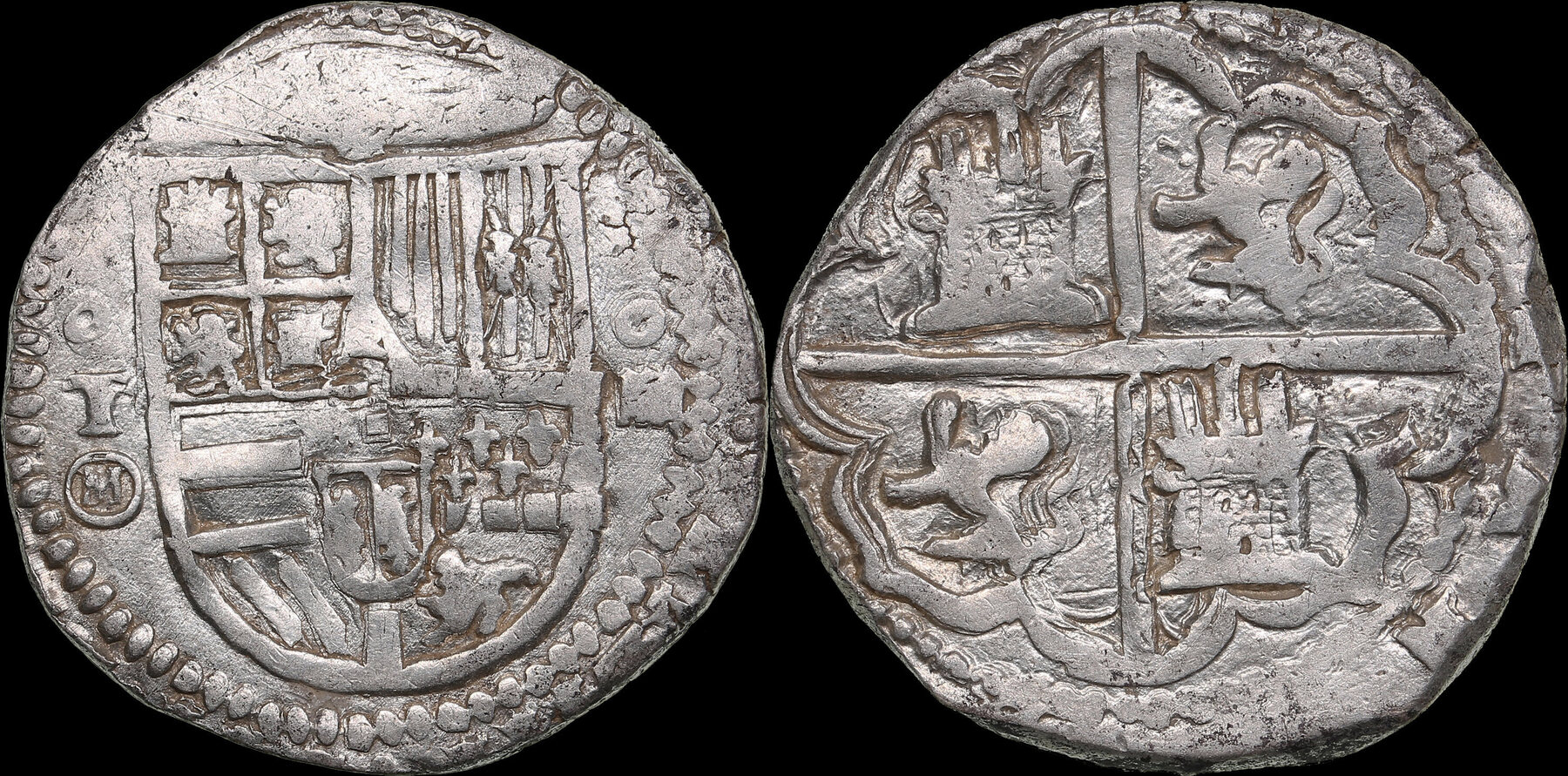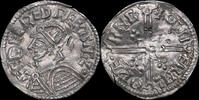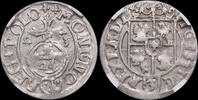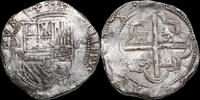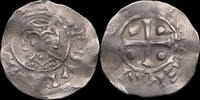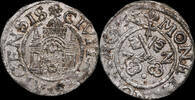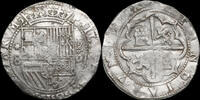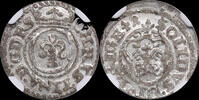MA-ID: 621302090
Customer feedback Numex OÜ
Excellent seller, highly recommended!
Thank You! Nice items for reasonable price, quick shipping! Excellent!!!
Ja, ich bin mit dem gekauften Geldschein vollig zufrieden. Danke.
M.Brindz...
Super Ware! Gerne wieder.
Spain / Toledo 4 reales nd Philip II (1556-1598), T, M AU
Numex OÜ 

9
On MA-Shops since 9 years
1195 ratings,
100 % Positive (last 24 months)
Worldwide shipping
511.50 £590,00 EUR
Import tax may be added
+ 21.67 £ shipping ( to United Kingdom )
Delivery time: 11 - 14 days
+ 21.67 £ shipping ( to United Kingdom )
| Customer Support +49 (0)2871 2180 383 |
| Payment methods |
| Wire Transfer |
Numismatic and Historic Overview of the Spain/Toledo 4 Reales nd Philip II (1556-1598)
Introduction:
The coin in question is a 4 Reales piece from the reign of Philip II of Spain, specifically minted in Toledo. This coin, cataloged as Cy# 3794 and Cal# 180, is made of silver with a weight of 13.73 grams and is graded AU (About Uncirculated), indicating it has seen minimal wear from circulation.
Historical Context:
Philip II, who reigned from 1556 to 1598, was one of the most influential monarchs in Spanish history. His rule saw Spain at the zenith of its power, with vast colonial possessions in the Americas, Europe, and Asia, which significantly influenced the economy and numismatic output of the era. The coinage from Philip II's reign reflects the wealth and the extent of the Spanish Empire, with silver from the New World being a crucial component of the minting process.
The Coin:
Design: The obverse typically features the Hapsburg shield, crowned, with the legend "PHILIPPVS II D G HISP ET IND REX" (Philip II by the Grace of God, King of Spain and the Indies). The reverse often shows the Cross of Jerusalem, symbolizing the Catholic faith, surrounded by the legend "HISPANIARVM REX" (King of the Spains), sometimes with additional inscriptions or mint marks.
Mint Marks and Assayers: This coin bears the mint mark 'T' for Toledo and 'M' for the assayer, which are crucial for numismatists in identifying the exact place and time of minting. Toledo, known for its historical significance, was one of the central mints in Spain during this period.
Material and Weight: Silver was abundant during Philip II's time, particularly from the mines of Potosí in Bolivia, which was part of the Spanish Empire. The standard weight for a 4 reales coin during this period was around 13.54 grams, making this coin slightly heavier than average, which could suggest either a minting variation or wear that has not reduced its weight significantly.
Condition (AU): An AU grade means the coin has light wear on only the highest points, maintaining much of its original mint luster. For collectors, this condition is highly desirable as it preserves the coin's historical and aesthetic integrity.
Numismatic Significance:
Value and Rarity: The value of such a coin in AU condition would be significantly higher than circulated examples due to its preservation state. While exact values fluctuate with market demand, historical significance, and rarity, this coin would be a prized piece for collectors of Spanish colonial or Habsburg coinage.
Collector's Interest: Collectors are particularly interested in coins from Philip II's reign because of the historical narrative they carry, reflecting Spain's imperial might, the influx of New World wealth, and the complex socio-economic dynamics of the 16th century.
Historical Documentation: The coin's design and inscriptions provide insights into the political and religious ethos of the time, with the Catholic monarch's title and the symbols of faith and royalty being central themes.
Conclusion:
This 4 Reales coin from Philip II's reign, minted in Toledo, is not just a piece of currency but a historical artifact that encapsulates the peak of Spanish imperial power. Its condition, material, and the detailed artistry involved in its minting make it a significant item for both numismatists and historians interested in the Hapsburg era of Spain. The coin's survival in About Uncirculated condition adds to its allure, offering a tangible link to the past, reminding us of the vast Spanish Empire's influence on global history during the late 16th century.
For further reading on similar coins, one might explore resources like Numista or CoinArchives for catalog information and historical context
Introduction:
The coin in question is a 4 Reales piece from the reign of Philip II of Spain, specifically minted in Toledo. This coin, cataloged as Cy# 3794 and Cal# 180, is made of silver with a weight of 13.73 grams and is graded AU (About Uncirculated), indicating it has seen minimal wear from circulation.
Historical Context:
Philip II, who reigned from 1556 to 1598, was one of the most influential monarchs in Spanish history. His rule saw Spain at the zenith of its power, with vast colonial possessions in the Americas, Europe, and Asia, which significantly influenced the economy and numismatic output of the era. The coinage from Philip II's reign reflects the wealth and the extent of the Spanish Empire, with silver from the New World being a crucial component of the minting process.
The Coin:
Design: The obverse typically features the Hapsburg shield, crowned, with the legend "PHILIPPVS II D G HISP ET IND REX" (Philip II by the Grace of God, King of Spain and the Indies). The reverse often shows the Cross of Jerusalem, symbolizing the Catholic faith, surrounded by the legend "HISPANIARVM REX" (King of the Spains), sometimes with additional inscriptions or mint marks.
Mint Marks and Assayers: This coin bears the mint mark 'T' for Toledo and 'M' for the assayer, which are crucial for numismatists in identifying the exact place and time of minting. Toledo, known for its historical significance, was one of the central mints in Spain during this period.
Material and Weight: Silver was abundant during Philip II's time, particularly from the mines of Potosí in Bolivia, which was part of the Spanish Empire. The standard weight for a 4 reales coin during this period was around 13.54 grams, making this coin slightly heavier than average, which could suggest either a minting variation or wear that has not reduced its weight significantly.
Condition (AU): An AU grade means the coin has light wear on only the highest points, maintaining much of its original mint luster. For collectors, this condition is highly desirable as it preserves the coin's historical and aesthetic integrity.
Numismatic Significance:
Value and Rarity: The value of such a coin in AU condition would be significantly higher than circulated examples due to its preservation state. While exact values fluctuate with market demand, historical significance, and rarity, this coin would be a prized piece for collectors of Spanish colonial or Habsburg coinage.
Collector's Interest: Collectors are particularly interested in coins from Philip II's reign because of the historical narrative they carry, reflecting Spain's imperial might, the influx of New World wealth, and the complex socio-economic dynamics of the 16th century.
Historical Documentation: The coin's design and inscriptions provide insights into the political and religious ethos of the time, with the Catholic monarch's title and the symbols of faith and royalty being central themes.
Conclusion:
This 4 Reales coin from Philip II's reign, minted in Toledo, is not just a piece of currency but a historical artifact that encapsulates the peak of Spanish imperial power. Its condition, material, and the detailed artistry involved in its minting make it a significant item for both numismatists and historians interested in the Hapsburg era of Spain. The coin's survival in About Uncirculated condition adds to its allure, offering a tangible link to the past, reminding us of the vast Spanish Empire's influence on global history during the late 16th century.
For further reading on similar coins, one might explore resources like Numista or CoinArchives for catalog information and historical context
Info / FAQ
| Shipping fees | ||||
|---|---|---|---|---|
| 0.87 £ to 43.35 £ | 43.35 £ to 173.39 £ | 173.39 £ to 433.48 £ | over 433.48 £ | |
| China | 10.40 £ | n/a | n/a | n/a |
| Germany | 4.33 £ | 4.33 £ | 4.33 £ | 13.00 £ |
| Estonia | 4.33 £ | 4.33 £ | 4.33 £ | 10.40 £ |
| United Kingdom | 4.33 £ | 4.33 £ | 4.33 £ | 21.67 £ |
| United States | 4.33 £ | 4.33 £ | 4.33 £ | 34.68 £ |
| European Union | 4.33 £ | 4.33 £ | 4.33 £ | 21.67 £ |
| World | 10.40 £ | 13.00 £ | 86.70 £ | 86.70 £ |
Information
Online orders are welcome as always and will be shipped directly.
|
Seller Home | 0Shopping cart | Terms of sale | Contact | MA Terms of sale | Privacy policy | Warranty | MA-Shops New Items Copyright ® 2001-2025, MA-SHOPS Coins All Rights Reserved. Designated trademarks and brands are the property of their respective owners. |
 Buy coins with warranty
Buy coins with warranty



